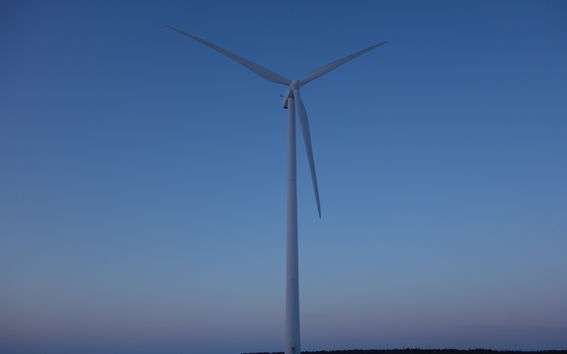District heating can be produced without fossil fuels in Finland – even in Helsinki

Heating accounts for about half of the energy consumed by the Finnish homes. Some of the researchers from the Smart Energy Transition project have now created a model for a fossil fuel-free Finland that proposes new solutions for phasing out completely coal and other fossil fuels from district heating.
In a fossil fuel-free Finland, the quantity of wind power would increase ten-fold and there would be a six-fold increase in the quantity of heat produced by heat pumps that make use of excess heat, geothermal heat and other ambient heat. With these solutions, Finland could eliminate fossil fuels rapidly and in a cost-effective way.
‘It is important for decision-makers and actors within the sector to understand that it is not possible to significantly increase further the use of biomass to generate energy. For this reason, the focus must shift to heat pumps, wind power, heat storage and demand response, explains Professor Armi Temmes of Aalto University, who is leading the project.
The proposed model shows that a clean district heating system is technically feasible even in large cities. For example, the fossil fuels used for producing district heating in Helsinki could be mostly replaced with heat pumps (1100 MW), which would amount to about ten Katri Vala power plants. Some of the heat pumps would be located in machinery halls, office buildings, shopping centres, schools, businesses and housing companies. In order to produce the electricity consumed by these heat pumps, about 170 wind turbines would be required (700 MW), and these could be built in areas with ideal wind conditions such as Ostrobothnia or Lapland.
Only 1 % of the cost of electricity storage
Alongside heat pumps and wind power, heat storage technologies will be needed to even out the electricity supply from wind and solar power. In cold climates, heat storage is a significantly cheaper option than electricity storage. In fact, when heat storage is included in district heating networks, the costs can be as low as 1 % of those of electricity storage. Electricity storage and demand response in residential buildings are suitable solutions for variations of supply lasting from few seconds to several hours However, heat storage can be used to store energy for days, weeks or even months.
‘Weekly heat storages would provide sufficient flexibility in Helsinki, for example, as periods of low wind normally last no longer than a few days. Periods of insufficient wind power can be dealt with in district heating networks in a cost efficient way through the use of heat storages and flexible, green Combined Heat and Power (CHP)’, explains Samuli Rinne, one of the researchers involved in the Smart Energy Transition project at Aalto University.
‘The system can shift between different energy sources depending on electricity market prices. When it’s very windy and electricity is cheap, the heat pumps can use wind power and the heat storages can be filled up. When it’s not windy and electricity is expensive, the heat pumps empty out the heat storages and the bio-CHP plants are turned on’, Rinne explains.
‘Instead of setting heat pumps and district heating networks against each other, models which combine the two should be developed. We have researched the business activities that are developing around clean energy solutions and have seen that in Finland there is already a lot of expertise in this area. Finland can benefit by being actively involved in the development of technology and markets which combine variable wind and solar power with district heating networks’, Armi Temmes emphasises.
Further information:
Rinne S., Auvinen K., Reda F., Ruggiero S., Temmes A. (2018) Discussion paper: Clean district heating - how can it work? Publication of the Smart Energy Transition project funded by the Academy of Finland’s Strategic Research Council. Available: http://smartenergytransition.fi/wp-content/uploads/2018/11/Clean-DHC-discussion-paper_SET_2018.pdf
Researcher, Doctoral Candidate Samuli Rinne, Aalto University
tel: +358 40 054 3835
samuli.rinne@aalto.fi
Smart Energy Transition project’s Stakeholder Relations Director, Researcher Karoliina Auvinen, Aalto University
tel: + 358 50 4624727
karoliina.auvinen@aalto.fi
Professor Armi Temmes, Aalto University
tel: +358 40 353 8315
armi.temmes@aalto.fi
Read more news

The semiconductor sector jobs open in research groups
Semi-Summer 2026 programme will provide an opportunity to gain the skills needed in a growing and international semiconductor sector.
New cooperation agreement between the City of Helsinki and Aalto University to strengthen a sustainable, vibrant and knowledgeable city
The main themes of the cooperation are vitality, innovations and entrepreneurship, as well as research cooperation and knowledgeable labour, drawing heavily on the research and education expertise of the university.
Aalto Inventors innovation training coming for hydrogen, quantum and microelectronics researchers this spring
Connect with industry and academic thought-leaders and gain widely applicable skills in communication, intellectual property, and business.






